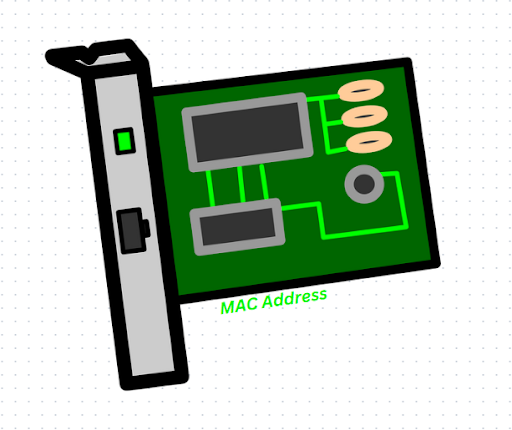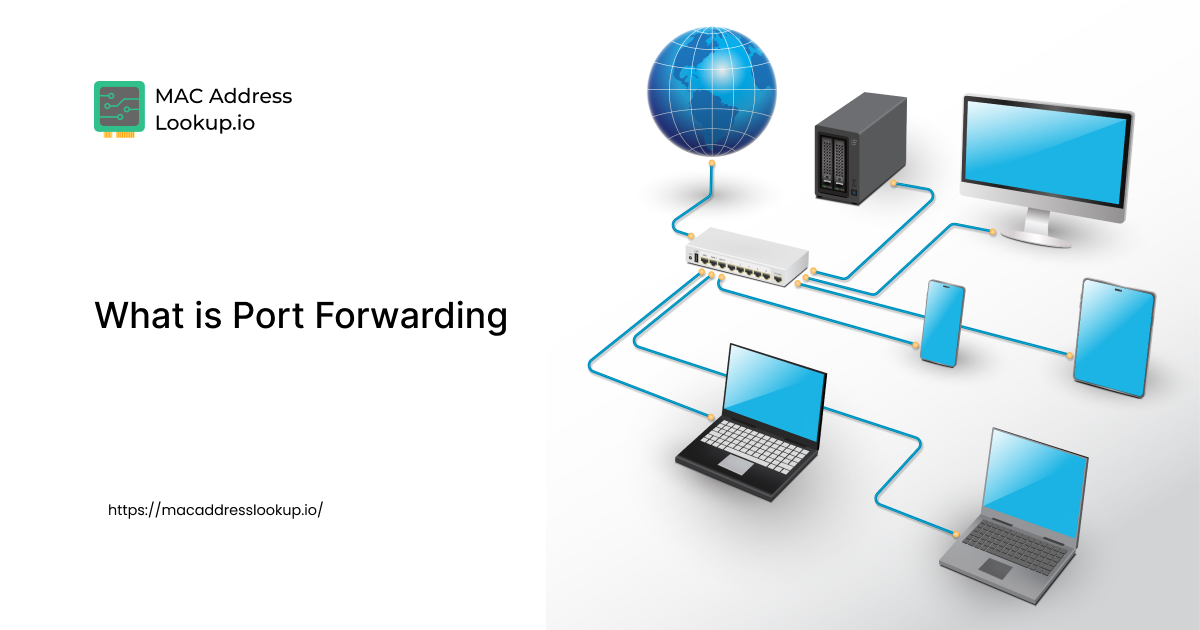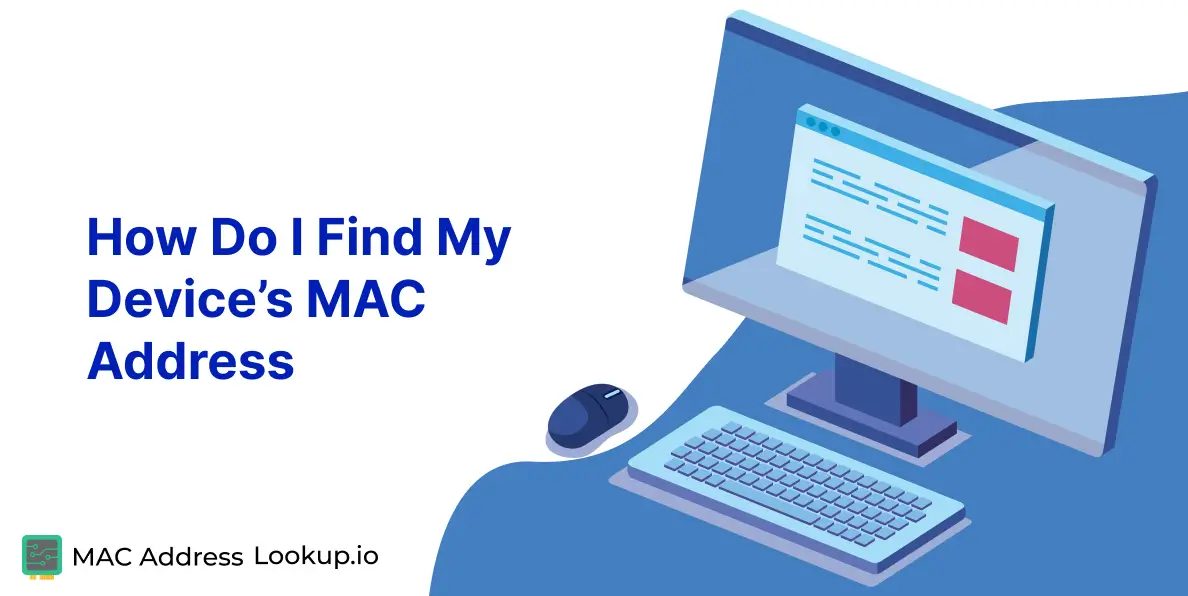How Hackers Use MAC Spoofing and How to Prevent It

Key Points
- MAC spoofing allows hackers to mask their device’s real identity and impersonate other devices on a network.
- Cybercriminals use MAC spoofing to bypass security filters, conduct man-in-the-middle attacks, and evade device tracking.
- Techniques like OS tools, dedicated software, and automation scripts are commonly used for MAC address spoofing.
- Detection and prevention rely on a mix of employee training, intrusion detection systems (IDS), strong encryption, and zero-trust policies through Network Access Control (NAC).
- Regularly auditing your network and using device identification tools can further help in spotting and blocking spoofed MAC addresses before they cause damage.
Cybersecurity is one of the biggest concerns of the 21st century. This is all thanks to the popularity and utility of the Internet. Most of the world is now connected via this medium. This means people can meet, work, collaborate, and do entertaining activities across the boundaries of their countries from the comfort of their homes.
This increased connectivity comes with many risks. Hackers are keen to exploit any weaknesses to hijack important communications and gain access to sensitive data. This data can be passwords, login info, bank information, and much more. Hackers can use this data for identity theft and fraud.
MAC spoofing is one of the most sophisticated ways of hijacking communications on the Internet. MAC spoofing essentially allows hackers to assume another’s identity and intercept communications.
Let’s look at MAC spoofing in detail, how it is used, and how you can protect yourself against it.
What is a MAC Address?

To understand MAC address spoofing, you obviously need to know what a MAC address is. So, here is a simple explanation.
All devices that can connect to the internet have a special piece of hardware called an NIC (Network Interface Card). The NIC has all the protocols and hardware ports that allow a device to connect to a network.
Each NIC has a MAC Address. A MAC address is a 12-digit hexadecimal number. It can look like this:
4a:5b:7c:8d:9f:2e
This MAC address is unique to each NIC and is encoded at a hardware level. Thus, it cannot be changed unless you change the NIC completely.
A MAC address is used to identify a device in a network, so all communications meant for it can be directed to it. MAC addresses are primarily private and are only used in internal networks. They are not publicly available on the internet.
That said, there are ways to learn the MAC addresses of a device if you have the appropriate access and technical know-how.
What Is MAC Spoofing?
MAC spoofing is the act of changing how your device’s MAC address appears to the network. The real MAC address is still the same, but you transmit false data to the network.
In this way, your device’s identity is hidden, and you can assume another device’s identity. This is the basic premise of MAC spoofing.
MAC spoofing has both legitimate and illegitimate uses. Understand that spoofing a MAC address is not illegal, but using a spoofed address for hacking is.
How Do Hackers Use MAC Spoofing?
So, how do bad actors use MAC spoofing? For a hacker to use MAC spoofing, they need access to your network. So, if you are worried about a MAC spoofing attack, you also need to review your network security.
Now, let’s see how hackers use MAC spoofing.
-
Bypassing Security
Many networks impose security regulations to limit unauthorized access to them. One of the more useful ways of imposing such a limit is to use MAC address filtering.
MAC address filtering is a technique where a network admin provides a whitelist of MAC addresses to the network, and only the addresses on that list are allowed to connect to that network. Any device that has a different MAC address is rejected and not allowed to connect.
The access point (the router that allows other devices to connect)of a network always checks the MAC address of any device that attempts to connect to it. It can do so because, in modern networking, all devices display their MAC address to the access point when attempting to connect.
This way, the access point can enforce MAC address filtering.
Now, if a hacker knows any of the MAC addresses on the whitelist, it can spoof its own MAC address and use it to bypass the filtering. As a result, the hacker gets access to the network. From there, they can do a number of harmful things, such as stealing data or planting a virus.
-
Conducting Man-in-the-middle Attacks
A man-in-the-middle (MITM) attack is a type of cyberattack in which a bad actor inserts themself between two communicators. It intercepts all the legitimate communication and can tamper with it in various ways.
MAC spoofing can enable a bad actor to intercept communication meant for another device by spoofing its MAC address. In this way, it can intercept sensitive data and information and pass on bogus messages to the real recipient.
In a large network, such an intrusion can go unnoticed for a long time.
-
Evading Tracking
Many hackers will spoof their MAC and IP addresses before attacking a network. That’s because both of these addresses can be used to identify a specific device. That device can be tracked to the real person behind the attack.
Hackers often use MAC and IP spoofing as a means of hiding their identity so that they can do their nefarious activities without fear.
Techniques Used in MAC Spoofing?
MAC spoofing is not a single technique. It is a concept, and it can be executed in several ways. Knowing these methods is crucial for preventing them; after all, how can you fight what you do not know?
So, here is the down low on the main MAC spoofing techniques.
Utilizing OS Tools
Operating systems such as Windows and Linux have built-in tools that let you change your MAC address at a software level. You can use these tools to manually enter a new MAC address and mask your real one.
In Linux, you can do this with terminal commands, while in Windows, you will need the Command Prompt. This method is manual, and it does not automatically change the MAC address. So, if you want to rotate your MAC address, you will have to do it each time manually.
With Dedicated Tools
Both Windows and Linux have a slew of tools that can change your device’s MAC address.
For Linux, one of the popular options is Macchanger. It has plenty of features, such as randomizing your MAC address, changing it automatically, and setting different MAC addresses for different networks.
On Windows, you can do much of the same stuff using tools like TMAC and SMAC.
Using Automation Scripts
This is perhaps the most commonly used method of malicious MAC spoofing.
Hackers can create scripts that use either of the previously mentioned methods, such as Terminal commands and tools, to rotate MAC addresses automatically.
This approach is not readily available to normal users who just want to prevent tracking and increase their privacy. That’s because it requires some programming knowledge to create scripts.
How Are these Techniques Used in Hacks?
A hacker may use any of the aforementioned MAC spoofing techniques to do the following things.
Clone a MAC Address
By cloning a MAC address of another device on a network, the hacker can receive the traffic meant for the original device. Hackers typically try to clone a high-profile device that will receive sensitive data so that they can use it in unethical ways.
Session Hijacking
Session hijacking is a technique where a hacker sniffs packets to find session tokens. Session tokens are used to bypass the need for repeated authentication. With a session token, a hacker can reopen any sessions of a target device without the victim knowing.
Hackers can do this by cloning the MAC address of a device, such as a network switch or router. This means that the hacker’s device can pose as a router or switch in the target network and therefore become a sieve through which all network data flows.
This allows them to sniff packets, hijack session tokens to bypass authentication checks, and do other nefarious stuff.
ARP Spoofing
In most networks, there is an Address Resolution Protocol (ARP) that maps IP addresses to MAC addresses. Essentially, what happens is that the protocol asks the entire network which MAC address has the following IP.
An ARP spoofing attack uses a spoofed MAC to get the IP assigned to the hacker’s device and gain access to the network.
How To Detect and Prevent MAC Spoofing Attacks?
MAC spoofing can be prevented by implementing several security measures. Let’s discuss some of them.
-
Train Employees To Recognize and Evade Social Engineering
MAC spoofing may sound like a surefire way of penetrating any network, but that is not the case. MAC spoofing is actually only viable once a network has been penetrated sufficiently.
This is because MAC addresses are not broadcast or used outside of an internal network. A hacker needs to have considerable means and connections to enter a network. This includes:
- Stealing a whitelist to learn which IPs and MACs are allowed by the filtering system
- Obtaining information from an employee using social engineering tactics.
- Other non-technical ways to obtain classified information include exploiting careless behavior and insecure practices.
All of these things can be prevented if you simply train your employees to be vigilant and recognize attempts by hackers to steal information through them or their systems.
Here’s how you can do that.
- Provide at least bi-annual classes/seminars on social engineering.
- Make sure your employees follow security best practices, such as not opening unknown links and emails, and keeping their systems locked when they are not in use.
- Train employees not to discuss sensitive information over the phone, through SMS/chats, or other communication methods.
- Train employees to recognize when they are being socially engineered to reveal information.
- Teach employees to share absolutely nothing about their job to outsiders, even the mundane details of their day-to-day life at the office.
By doing this, you make it difficult for a hacker to obtain the necessary information and access to make use of MAC spoofing.
-
Set up Intrusion Detection Systems (IDS)
An IDS is a type of monitoring software that can identify anomalies in a network and detect when an intrusion has occurred.
IDS can detect MAC spoofing by monitoring for anomalies such as the following.
- Multiple IP addresses for one MAC address
- Watching ARP tables to see if one device (MAC address) suddenly starts claiming to be another.
- Checking for fingerprints such as browser version, OS, traffic volume, protocols, etc, to identify cloned MAC addresses.
- Monitoring whether a MAC address suddenly switches ports. This happens when MAC spoofing is going on.
IDS can raise the alarm and take some emergency security measures, so having one to protect your network is nothing short of necessary.
-
Set up Strong Encryption
MAC spoofing can be easily nullified if you use strong encryption techniques. Private key encryption can help you prevent damage from MAC spoofing.
What happens in private key encryption is that all communications in a network are encrypted. If someone were to look at the encrypted message, they would only see gibberish.
The legitimate recipients have the private key necessary for decrypting the message and returning it to a sensible form.
A hacker will not have this key (if all your other security measures are up to spec). This means even if they intercept traffic through MAC spoofing, they can’t understand or make use of the data due to the encryption.
However, this only works if the encryption is powerful. Weak encryption methods can be broken through with brute force, thus making them useless.
-
Enforce Zero Trust Policies via NAC
NAC stands for network access control. It is a security solution that controls who gets access to a network and how much.
For example, a network admin may have unrestricted access, employees may have access to company resources, while visitors will have only rudimentary access.
You can entrust a zero-trust policy via NAC that disallows all suspicious devices from connecting to the network. In a zero-trust policy, all devices that connect to the network have to undergo intense verification before being allowed access.
This includes doing things like:
- Identity checks using login credentials or certificates. If a hacker doesn’t have them, they won’t get access to the network.
- A MAC address lookup to check the vendor and device type of a connection. A spoofed MAC address will often have a discrepancy between the device type shown in the OUI lookup and the device type being advertised on the network.
- Other compliance checks include checking the installed antivirus, firewall settings, endpoint protection, and encryption. If any of these things are not according to the NAC compliance list, the device will be denied entry to the network.
An NAC utilizes various methods of this sort to confirm its suspicions and ban devices from entering the network. The point of doing this is that if a suspicious device never makes it onto your network, there will be no opportunities for MAC spoofing.
Conclusion
So, there you have it, MAC address spoofing and how hackers can use it. MAC address spoofing is a cyberattack that usually occurs during the intermediate or advanced stage of an ongoing but hidden hack. MAC spoofing is used to steal sensitive data and for illegal financial gain.
There are plenty of ways to deal with MAC spoofing, and most of them equate to beefing up your network security. However, you should also train your employees not to leak information accidentally to social engineering tactics used by hackers.
Frequently Asked Questions
Can a MAC Address Be Traced?
A MAC address, by itself, cannot be traced over the internet because it is a hardware identifier used only within local networks. Once data leaves your local network and travels across the internet, your MAC address is no longer visible — only your IP address is used for routing.
However, within a local network, network administrators or security tools can log and track devices using their MAC addresses.
Is MAC Spoofing Illegal?
MAC spoofing — the act of changing or faking a device’s MAC address — isn’t inherently illegal. In many cases, users spoof their MAC address for privacy or testing purposes. However, using MAC spoofing to bypass network restrictions, impersonate other devices, or commit fraud can be considered illegal, depending on the laws of your region.
Can MAC Spoofing Work Over WiFi?
Yes, MAC spoofing can work over WiFi networks. When a device connects to a wireless network, the MAC address is part of the data that identifies the device to the router.
If you spoof the MAC address before connecting, the router and any other networked device will see the fake address rather than the real one
How do I know If Someone is Spoofing My MAC?
Detecting MAC spoofing can be tricky, but there are signs you can watch for. If your network experiences device conflicts, unexpected disconnections, or you notice duplicate MAC addresses in your router logs or network monitoring tools, it could indicate that someone is spoofing your MAC. Network administrators often use specialized monitoring software to detect and address these issues.



